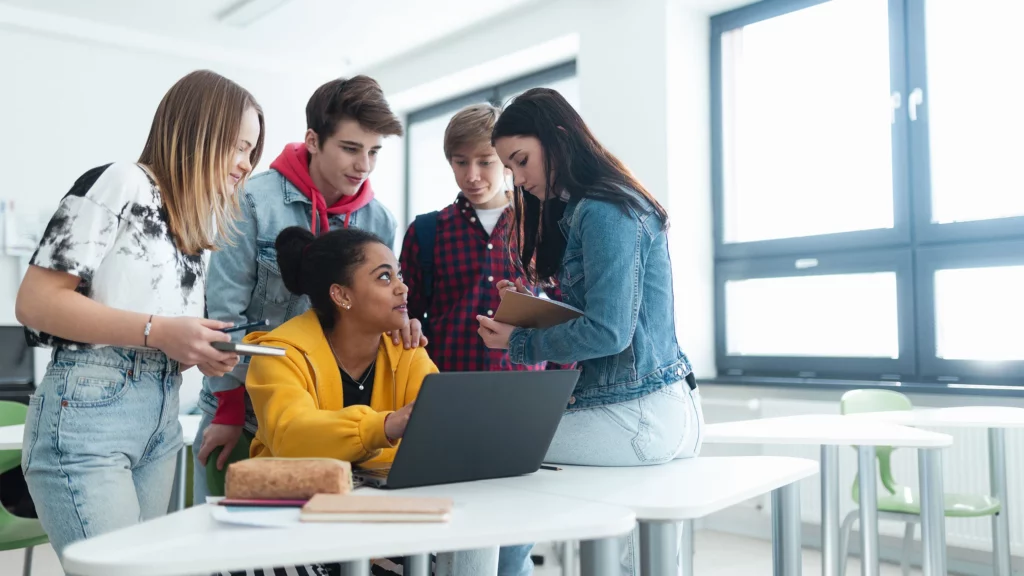
Positive student relationships form the bedrock of effective education. When students feel connected, respected, and supported, they are more likely to thrive academically and emotionally. This blog explores the strategies and practices educators can implement to nurture these relationships and create a nurturing learning environment that contributes to student success.
Section 1: Understanding the Significance of Positive Student Relationships
Positive student relationships play a pivotal role in shaping a student’s educational journey. Research has shown that students with strong connections to their teachers, peers, and parents tend to be more motivated, engaged, and open to learning. These relationships contribute to better attendance, improved academic outcomes, and a more positive attitude towards school.
Section 2: Factors That Influence Student Relationships
- Teacher-Student Interactions: Building trust and rapport is vital. By actively listening, showing empathy, and maintaining clear communication, teachers establish an environment where students feel valued and understood.
- Peer Relationships: Collaboration and teamwork within the classroom encourage the development of social skills, empathy, and a sense of belonging.
- Parent Involvement: Engaging parents in the education process creates a holistic support network. Regular communication and parent-teacher conferences facilitate a shared commitment to student growth.
Section 3: Strategies for Nurturing Positive Student Relationships
Subsection 3.1: Teacher-Student Interactions
Effective teacher-student interactions involve:
- Active Listening: Taking the time to listen to students’ thoughts, concerns, and perspectives fosters trust and demonstrates that their voices matter.
- Empathy and Understanding: Recognizing the individuality of each student’s challenges and strengths helps teachers tailor their approach.
- Clear Communication: Setting expectations and providing constructive feedback in a respectful manner helps students understand their progress and areas for improvement.
Subsection 3.2: Peer Relationships
Fostering peer relationships can involve:
- Group Activities and Projects: Collaborative assignments encourage students to work together, learn from one another, and celebrate their achievements as a team.
- Icebreakers and Team-Building Exercises: These activities break down social barriers, helping students connect beyond their initial comfort zones.
- Addressing Conflicts: Teaching conflict resolution skills equips students to navigate disagreements constructively, contributing to a more harmonious classroom.
Subsection 3.3: Parent Involvement
Engaging parents effectively includes:
- Open Communication Channels: Regular updates on student progress via emails, newsletters, and digital platforms keep parents informed and involved.
- Parent-Teacher Conferences: These meetings provide a platform for discussing student growth, challenges, and collaborative strategies.
- Involving Parents in Classroom Activities: Encouraging parents to participate in classroom events or volunteering opportunities strengthens the connection between home and school.
Section 4: Creating a Supportive Learning Environment
- Physical Classroom Setup: Designing flexible spaces that encourage interaction and collaboration can lead to increased student engagement.
- Inclusive Practices: Recognizing and accommodating diverse backgrounds and learning styles ensures every student feels valued and supported.
- Emotional Well-Being: Offering resources for stress management and emotional support helps students develop resilience and cope with challenges effectively.
Section 5: Leveraging Technology for Student Relationship Building
- Virtual Engagement: In online learning environments, maintaining regular communication through video calls, discussion forums, and messaging platforms is crucial.
- Online Collaboration Tools: Utilizing digital tools for group projects and collaborative assignments helps students connect virtually.
- Balancing Technology with Personal Connections: While technology offers convenience, fostering personal relationships through virtual means is equally important.
Section 6: Measuring and Assessing Student Relationships
- Qualitative and Quantitative Methods: Combining surveys, interviews, and observations provides a comprehensive view of student relationships.
- Feedback Surveys: Gathering input from students, parents, and colleagues offers valuable insights for refining relationship-building strategies.
- Adapting Strategies Based on Feedback: Continuous improvement based on feedback ensures that relationship-building efforts remain relevant and effective.
Takeaway
Nurturing positive student relationships is not just a goal; it’s an essential foundation for creating an environment where students can flourish academically and emotionally. By understanding the significance of these relationships, implementing effective strategies, and leveraging technology, educators can foster a supportive learning environment that positively impacts students’ lives for years to come. Remember, every interaction, every effort to build rapport, and every moment of active listening contributes to shaping a brighter educational future for all students.





